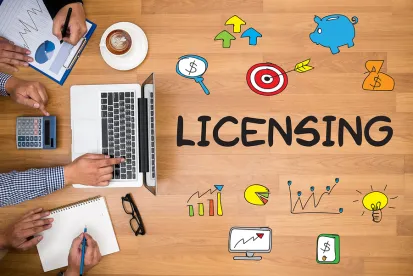The Coronavirus pandemic revved up previously scarce funding for scientific research. Part one of this series addressed the patentability of COVID-19 related Biotech, Pharma & Personal Protective Equipment (PPE) Inventions and whether inventions related to fighting COVID-19 should be patentable. Both economists and lawmakers are critical of the exclusivity period granted by patents, especially in the case of vaccines and drugs. Recently, several members of Congress requested “no exclusivity” for any “COVID-19 vaccine, drug, or other therapeutic.”[i]
In this segment, the unique issues related to the intellectual property rights of Coronavirus related software inventions, specifically, Artificial Intelligence (AI), Data Storage & Blockchain are addressed.
Digital Innovations
Historically, Americans have adhered to personalized healthcare and lacked the incentive to set up a digital infrastructure similar to Taiwan’s which has fared far better in combating the spread of a fast-moving virus.[ii] But as hospitals continue to operate at maximum capacity and with prolonged social distancing, the software sector is teeming with digital solutions for increasing the virtual supply of healthcare to a wider network of patients,[iii] particularly as HHS scales back HIPAA regulations.[iv] COVID-19 has also spurred other types of digital innovation, such as using AI to predict the next outbreak and electronic hospital bed management, etc.[v]
One area of particular interest is the use of blockchain and data storage in a COVID/post-COVID world. Blockchains can serve as secure ledgers for the global supply of medical equipment, including respirators, ventilators, dialysis machines, and oxygen masks.[vi] The Department of Homeland Security has also deemed blockchain managers in food and agricultural distribution as “critical infrastructure workers”.[vii]
Patentability
Many of these digital inventions will have a hard time with respect to patentability, especially those related to data storage such as blockchains. In 2014, the Supreme Court found computer-related inventions were “abstract ideas” ineligible for patent protection in Alice v. CLS Bank.[viii] Because computer-implemented programs execute steps that can theoretically be performed by a human being but are only automated by a machine, the Supreme Court concluded that patenting software would be patenting human activity. This type of patent protection has long been considered by the Court to be too broad and dangerous.
Confusion
The aftermath of Alice is widespread confusion amongst members of the patent bar as well as the USPTO as to how computer-related software patents were to be treated henceforth.[ix] The USPTO attempted to clarify some of this confusion by a series of Guidelines in 2019.[x] Although well-received by the IP community, the USPTO’s Guidelines are not binding outside of the agency, meaning they are have little dispositive effect when parties must bring their cases to the Federal Circuit and other courts.[xi] Indeed, the Federal Circuit has made clear that they are not bound by the USPTO’s guidance.[xii] The Supreme Court will not provide further clarification and denied cert on all patent eligibility petitions in January of this year.[xiii]
The Future
Before the coronavirus outbreak, Congress was working on patent reform.[xiv] But the long-awaited legislation was set aside further still as legislators focused on needed measures to address the pandemic. On top of that, both Senator Tillis and Senator Coons who have spearheaded the efforts for patent reform are now facing reelection battles, making the future congressional leadership on patent reform uncertain.
Conclusion
Patents receive a lot of flak for being company assets, and like many assets, patents are subject to abuse.[xv] But patents are necessary for innovation, particularly for small and medium-sized companies by carving out a safe haven in the marketplace from the encroachment of larger companies.[xvi] American leadership in medical innovations had been declining for some time prior to the pandemic[xvii] due to the cumbersome US regulatory and legal environments, particularly for tech start-ups seeking private funding.[xviii]
Not all data storage systems should receive a patent and no vaccine should receive a patent so broad that it snuffs out public access to alternatives. The USPTO considers novelty, obviousness and breadth when dispensing patent exclusivity, and they revisit the issue of patent validity downstream with inter partes review. There are measures in place for ensuring good patents so let that system take its course. A sweeping prohibition of patents is not the right answer.
The opinions stated herein are the sole opinions of the author and do not reflect the views or opinions of the National Law Review or any of its affiliates
[i] Congressional Progressive Leaders Announce Principles On COVID-19 Drug Pricing for Next Coronavirus Response Package, (2020), https://schakowsky.house.gov/media/press-releases/congressional-progressive-leaders-announce-principles-COVID-19-drug-pricing (last visited May 10, 2020).
[ii] Christina Farr, Why telemedicine has been such a bust so far, CNBC (June 30, 2018),
https://www.cnbc.com/2018/06/29/why-telemedicine-is-a-bust.html and Nick Aspinwall, Taiwan Is Exporting Its Coronavirus Successes to the World, Foreign Policy (April 9, 2020), https://foreignpolicy.com/2020/04/09/taiwan-is-exporting-its-coronavirus-successes-to-the-world/.
[iii] Joe Harpaz, 5 Reasons Why Telehealth Is Here To Stay (COVID-19 And Beyond), Forbes (May 4, 2020), https://www.forbes.com/sites/joeharpaz/2020/05/04/5-reasons-why-telehealth-here-to-stay-COVID19/#7c4d941753fb.
[iv] Jessica Davis, OCR Lifts HIPAA Penalties for Telehealth Use During COVID-19, Health IT Security (March 18, 2020),
https://healthitsecurity.com/news/ocr-lifts-hipaa-penalties-for-telehealth-use-during-COVID-19.
[v] Charles Alessi, The effect of the COVID-19 epidemic on health and care – is this a portent of the 'new normal'?, HealthcareITNews (March 31, 2020), https://www.healthcareitnews.com/blog/europe/effect-COVID-19-epidemic-health-and-care-portent-new-normal and COVID-19 and AI: Tracking a Virus, Finding a Treatment, Wall Street Journal (April 17, 2020), https://www.wsj.com/podcasts/wsj-the-future-of-everything/COVID-19-and-ai-tracking-a-virus-finding-a-treatment/f064ac83-c202-40f9-8259-426780b36f2c.
[vi] Sara Castellenos, A Cryptocurrency Technology Finds New Use Tackling Coronavirus, Wall Street Journal (April 23, 2020), https://www.wsj.com/articles/a-cryptocurrency-technology-finds-new-use-tackling-coronavirus-11587675966?mod=article_inline.
[vii] Christopher C. Krebs, MEMORANDUM ON IDENTIFICATION OF ESSENTIAL CRITICAL INFRASTRUCTURE WORKERS DURING COVID-19 RESPONSE, Cybersecurity and Infrastructure Security Agency (March 19, 2020), available at https://www.cisa.gov/sites/default/files/publications/CISA-Guidance-on-Essential-Critical-Infrastructure-Workers-1-20-508c.pdf.
[viii] Alice v. CLS Bank, 573 U.S. 208 (2014), available at https://www.supremecourt.gov/opinions/13pdf/13-298_7lh8.pdf.
[ix] David O. Taylor, Confusing Patent Eligibility, 84 Tenn. L. Rev. 157 (2016), available at https://scholar.smu.edu/cgi/viewcontent.cgi?article=1221&context=law_faculty.
[x] 2019 Revised Patent Subject Matter Eligibility Guidance, United States Patent Office (January 7, 2019), available at https://www.federalregister.gov/documents/2019/01/07/2018-28282/2019-revised-patent-subject-matter-eligibility-guidance.
[xi] Steve Brachmann, Latest CAFC Ruling in Cleveland Clinic Case Confirms That USPTO’s 101 Guidance Holds Little Weight, IPWatchDog (April 7, 2019), https://www.ipwatchdog.com/2019/04/07/latest-cafc-ruling-cleveland-clinic-confirms-uspto-101-guidance-holds-little-weight/id=107998/.
[xii] Id.
[xiii] U.S. Supreme Court Denies Pending Patent Eligibility Petitions, Holland and Knight LLP (January 14, 2020),
[xiv] Tillis and Coons: What We Learned At Patent Reform Hearings, (June 24, 2019), available at https://www.tillis.senate.gov/2019/6/tillis-and-coons-what-we-learned-at-patent-reform-hearings.
[xv] Gene Quinn, Twisting Facts to Capitalize on COVID-19 Tragedy: Fortress v. bioMerieux, IPWatchDog (March 18, 2020), https://www.ipwatchdog.com/2020/03/18/twisting-facts-capitalize-COVID-19-tragedy-fortress-v-biomerieux/id=119941/.
[xvi] Paul R. Michel, To prepare for the next pandemic, Congress should restore patent protections for diagnostic tests, Roll Call (April 28, 2020), https://www.rollcall.com/2020/04/28/to-prepare-for-the-next-pandemic-congress-should-restore-patent-protections-for-diagnostic-tests/.
[xvii] Medical Technology Innovation Scorecard_The race for global leadership, PwC (January 2011), https://www.pwc.com/il/en/pharmaceuticals/assets/innovation-scorecard.pdf.
[xviii] Elizabeth Snell, How Health Privacy Regulations Hinder Telehealth Adoption, HealthITSecurity (May 5, 2015),https://healthitsecurity.com/news/how-health-privacy-regulations-hinder-telehealth-adoption.




 />i
/>i

